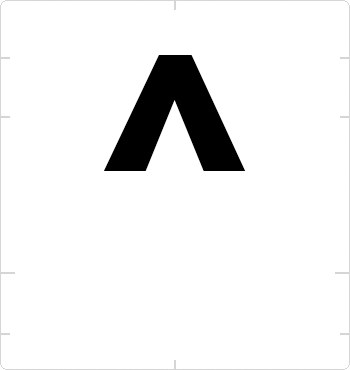

UNICODE CARET CODE
firstCharacter must be the character with the lower code point, and lastCharacter must be the character with the higher code point.Ī negative character group in a larger regular expression pattern is not a zero-width assertion.

Two characters are contiguous if they have adjacent Unicode code points.
UNICODE CARET SERIES
A character range is a contiguous series of characters defined by specifying the first character in the series, a hyphen (-), and then the last character in the series. Where firstCharacter is the character that begins the range and lastCharacter is the character that ends the range. The syntax for specifying a range of characters is as follows: character_group can consist of any combination of one or more literal characters, escape characters, or character classes. Where character_group is a list of the individual characters that cannot appear in the input string for a match to succeed. The syntax for specifying a list of individual characters is as follows: The list of characters may be specified individually, as a range, or both.

Match any uppercase character from A to Z.Ī negative character group specifies a list of characters that must not appear in an input string for a match to occur. The regular expression \b\w*\b is defined as shown in the following table. The example displays the following output:ĭim input As String = "A city Albany Zulu maritime Marseilles"įor Each match As Match In Regex.Matches(input, pattern) String pattern = input = "A city Albany Zulu maritime Marseilles" įoreach (Match match in Regex.Matches(input, pattern)) It uses the subexpression to represent the range of capital letters from A to Z. The following example matches words that begin with any capital letter. Match either a white-space character or a punctuation mark. Match one or more non-white-space characters, but as few as possible. Match the literal character "y" followed by a white-space character. For more information, see Character Class Subtraction.Ĭharacter classes that match characters by category, such as \w to match word characters or \p] is defined as follows: Pattern NET supports character class subtraction expressions, which enables you to define a set of characters as the result of excluding one character class from another character class. For more information, see Decimal Digit Character. A character in the input string can be anything other than a Unicode decimal digit. For more information, see Decimal Digit Character.Ī non-decimal digit. A character in the input string can be any of a number of characters classified as Unicode decimal digits. For more information, see Non-White-Space Character.Ī decimal digit. A character in the input string can be any character that is not a white-space character. For more information, see White-Space Character.Ī non-white-space character. A character in the input string can be any Unicode separator character, as well as any one of a number of control characters. For more information, see Non-Word Character.Ī white-space character. A character in the input string can belong to any Unicode category that is not a word character. For more information, see Word Character.Ī non-word character. A character in the input string can belong to any of the Unicode categories that are appropriate for characters in words. For more information, see Negative Unicode Category or Unicode Block.Ī word character. A character in the input string must not be a member of a particular Unicode category or must not fall within a contiguous range of Unicode characters for a match to succeed. For more information, see Unicode Category or Unicode Block.Ī negative general Unicode category or named block. A character in the input string must be a member of a particular Unicode category or must fall within a contiguous range of Unicode characters for a match to succeed. For more information, see Any Character.Ī general Unicode category or named block. (dot or period) character in a regular expression is a wildcard character that matches any character except \n. For more information, see Negative Character Group.Īny character. A character in the input string must not match one of a specified set of characters. For more information, see Positive Character Group. A character in the input string must match one of a specified set of characters. NET supports the following character classes: A character class defines a set of characters, any one of which can occur in an input string for a match to succeed.


 0 kommentar(er)
0 kommentar(er)
